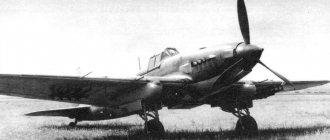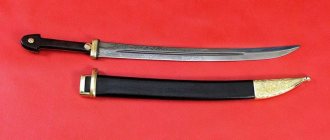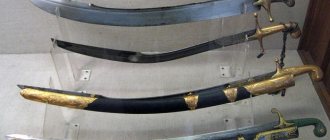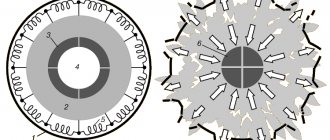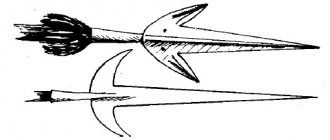What are the features of the knife
In the Pavlovsky district of the city of Vorsma, a new product in the field of combat knives was developed, which was intended for the Marine Corps. The developer was the Saro company, which focuses on the versatility of the knife.
Thus, it can be used as a tactical knife for the Marine Corps, and the “Storm” can also be found among the equipment of swimmers in a combat environment. When choosing this model, you should understand that it will be especially effective during close combat.
The “Storm” is good during combat use, but some knife lovers are confused by the “opener” on the “Storm”, which is clearly needed occasionally, but at the same time spoils the appearance a little.
Varieties of combat knives according to blade shape
The most important element of any combat knife is its blade, since it determines the main characteristics and purpose of the weapon. In turn, the main attribute of the blade is its shape. And here are its variants used in the manufacture of combat edged weapons:
- Tanto. Japanese fighting knives are traditionally made in this form. It has been used for centuries, but is currently experiencing a real boom. The main advantage of Tanto is the massiveness of the blade, which is preserved along its entire length and provides the knife with high reliability and extremely resistant sharpening. With such a blade you can break through strong obstacles and repel enemy attacks. The sharpening can be wedge-shaped or concave. Another well-known representative of Japanese sharpening is the Austrian combat knives Eickhorn Kampfmesser, which are in service with the armies of many European countries.
- Bowie. Another classic option that has still not lost its relevance. American combat knives of the 19th century were also made in this form. A characteristic feature is the tip, which in its profile resembles a duck’s beak. In this case, the blade itself can be either straight or curved. The strength of Bowie blades due to the concave line of the spine is lower than that of Tanto, but it also copes well with utilitarian tasks. In combat, such knives deliver mainly stabbing blows - the sharp nose of the blade penetrates tissue perfectly. This feature of Bowie's concept is reminiscent of a traditional dagger.
- Drop Point. This is not a purely combat knife, but rather a wide-profile tool, since it is characterized by low aggressiveness and significant strength. Its blade has a drop-shaped shape and, in most cases, one-sided sharpening. In appearance and in terms of their use, they are similar to hunting ones.
- Dagger. In its classic design, it is a symmetrical double-edged knife with a light and relatively thin blade and a 4-way sharpening, specializing in piercing blows. Excellent for the role of a tactical weapon in close combat, as it allows you to easily make movements of all kinds. The dagger is completely unsuitable for the role of a tool.
- Spear Point. The shape of such a blade is similar to the tip of a spear, is reliable and can withstand high loads. The butt is curved upward, so the blade remains massive throughout its entire length. Sharpening is usually one-sided; the butt is supplemented with a blende. The tip is located almost exactly on the horizontal center line, which makes Spear Points a good weapon. Such knives do not cope very well with utilitarian tasks.
- Hawkbill. Specific knives with a sickle-shaped blade, which is perfect for cutting cables, belts, etc. It is rarely used in open combat, since it is completely unsuitable for piercing blows. At the same time, such a blade can be used like a claw or a hook - it is capable of delivering powerful hook strikes and circular strikes.
Each of the considered blade shapes can have different variations that emphasize certain performance characteristics.
Knife specifications
- Considering that the knife is intended for the Marine Corps, the manufacturers chose 65x13 steel to avoid rust on the blade.
- The length of the knife is 305 mm, 170 mm of which is allocated to the spear-shaped blade.
- Such a massive blade, even by its appearance, can discourage the enemy from entering into a confrontation with you.
- The blade is approximately 4.5 mm thick.
- For a secure grip, a rubber-plastic handle is used; thanks to its tenacity and elasticity, the knife does not slip on the hand.
- The declared hardness of the metal is 55-57 HRC. The weapon is wear-resistant, but difficult to sharpen.
- A stiletto point is installed on the butt, thanks to which you can easily pierce the flesh of an attacker.
The blade has an addition for breaking and bending wire.
According to observations, such a device rather adds slight bewilderment than versatility to the knife. But in certain situations in the combat environment, such a device is very necessary.
Storm knife and case for it.
Considering that the knife is a combat knife and belongs to the cold category, it is impossible to find it on the open market for the civilian population, but according to the characteristics and needs of a particular unit, the knife can be made to order with the appropriate technical characteristics.
So, for example, for one of the special forces the “Infantryman” was used, but with SNT-62 steel. At the household level, such steel is considered decent in terms of strength and hardness.
Manufacturers insist that this version of the knife is much cooler than even the steel assembly from the Japanese, although there is no evidence of this as such. There is also unverified information that the most powerful metal press in Russia is used to make this blade.
Overall, the knife handles well and fits well in the hand. In addition, there are protrusions on the surface, which also add a secure grip; on the top there is a special ring on which you can attach a lanyard.
Classification by blade sharpening shape
To a large extent, the type of sharpening influences the ability to use a particular knife in various situations. In particular, it determines the permissible loads on the blade. Today, in the production of military edged weapons, the following sharpening options are used.
Wedge-shaped
A traditional variety in which the blade expands smoothly and evenly upward from the cutting edge. This sharpening is highly durable and practical, therefore it is used on combat knives with a universal profile. By changing the angle of the wedge, you can increase the strength of the blade or improve its cutting qualities.
Dolovaya
It is used on narrow and extremely thin blades, which is why it is also known as a razor blade. To ensure mechanical strength, the blade is complemented by a massive butt, otherwise the knife would be too fragile. A knife with a fuller sharpening is exclusively a cutting tool; it should not be used for utilitarian purposes.
Chisel
It resembles a wedge-shaped sharpening, but the bevel here runs only along one side of the blade - the other side remains strictly vertical. The chisel sharpening became especially widespread among Japanese knife makers. Its main advantage is its high practicality and durability.
Convex
Combat knives do not receive such sharpening very often, since it is characterized by a chopping effect rather than a cutting one. At the same time, it is perfect for blades used as tools. Therefore, you can equip your ammunition with any of the above knives - and supplement it for greater practicality with a cleaver with a double-sided sharpening of a convex type.
What else should you know about the knife?
Perhaps, even from a visual inspection of the “Storm” it becomes clear that the universal combat knife, as the developers believed, did not work out. But the appearance is really impressive and aggressive, which from the first seconds can cause panic even before the battle begins. The knife is good for stabbing.
To start using such a knife, you need dexterity and certain skills, otherwise, when striking with an iron guard, you can easily damage your hand. Perhaps injury to your hand does not scare you at all, but it is worth remembering that during a battle any wound or bruise can be fatal.
By the way, the coating does not produce glare, which allows you to avoid becoming a quick target in experienced sniper hands.
The massive knife is designed in an aggressive style and is designed specifically for marines; the blade configuration is “sharpened” for close combat. If necessary, it can be used for both domestic and tourist purposes.
Previous
Combat knivesKarambit - claw knife: what is it for and how to hold it
Next
KnivesCharacteristics of steel AUS 8
Application
The shape of the dagger is in the form of a spear, its anatomically convenient guard provides significant penetrating power of the knife. This combat blade is suitable for piercing, cutting and chopping blows using a forward and reverse grip.
Also, traumatic blows can be carried out using a massive metal pommel. Its small size makes it very convenient in the city, in tight spaces, crowded places - where the use of firearms is impractical and inconvenient.
Possibility of using combat knives
For a soldier, a knife serves not only as a tool for silently eliminating the enemy, but also as a multifunctional working tool. Moreover, in most cases this is not a forced measure, but an opportunity initially built into the design. And here are just some of the possible ways to use a combat knife.
Preparing a firing position
Accuracy and efficiency of actions are important here. The fighter must clear as quickly as possible the space for firing, both natural, for example, tree branches and bushes, and artificial, for example, curtains, if the firing point is located in a building. In some cases, you can use a knife to remove excess soil, but only high-strength blades are suitable for such work.
Freedom from various hindrances
The knife will help you quickly cut tangled lines and ropes used when landing and descending on vertical surfaces. To do this, it is better to use special knives with a saw edge on the butt.
Clearing underwater space
For combat swimmers and paratroopers, sabotage groups and other units in contact with water, a knife often becomes the only effective weapon. With its help, you can not only silently, without attracting attention, eliminate enemy submariners, but also quickly get out of fishing nets. The latter are often found in coastal waters, and getting out of them is quite difficult. It is not easy to break a strong fishing line, but a sharp knife copes with this task perfectly.
Comparison of knives DV 1 and DV 2
Speaking about DV Kizlyar knives, it is quite difficult to separate them into two separate products. Their differences are in the length of the blade and the false blade, which has practically no effect on the characteristics of the cutters. Throughout the existence of products, different grades of steel have been used for manufacturing.
And also both cutters have either a galvanized blade or a high-gloss polish. In the future we will consider the DV 2 knife model, one is more relevant for today’s user.
Advantages and disadvantages
While developing the hunting knife DV 2 and DV 1, the designers were able to cope with the task. The cutter will really help life support in extreme conditions. The positive points are:
- The spear-shaped form has excellent penetrating properties.
- Thanks to competent triggers with a thick spine, the cutting properties of the knife are decent.
- A convenient finger stop in front of the blade allows you to grip the cutter for doing small jobs.
- The false blade on the butt does an excellent job of chopping bones, while the main blade is not affected and remains sharp.
- The massive butt allows you to straighten small metal objects using gentle blows.
A clear understanding of the dimensions of the DV 2 knife.
The design of the shank makes the knife resistant to lateral loads. Users say the wooden handle is a disadvantage. It gets wet and swells, which contributes to its breaking under heavy loads. There are no more negative aspects. But with proper care, such problems will not arise.
Feedback from knife users
Hunting knife DV 2 and DV 1 - not for everyone. DV 2 is sometimes called a pig splitter. It happens that the cutter in the picture does not inspire you, but when you touch it in real life, you are filled with respect and are ready to buy it right away. Let's see how users respond to the DV1/2 knife:
Maxim, 42 years old, Moscow: “My father advised me to buy it. It seems inexpensive. I held it in my hands in the store - it was a great thing, and for hunting I decided to buy a smaller tool. I think that the DV-2 is too huge and it will be difficult to use it during hunting IMHO. But a beautiful sword! I almost bought it just like that.”
Arseny, 35 years old, St. Petersburg: “Sometimes it is not only more convenient than an ax, but it is the only tool that can get the job done. They can still dig a little and the qualities of the knife are preserved. In Russian conditions, I only once regretted that I did not have such a cutter at hand. If you don’t bother with the weight of your equipment, it won’t be superfluous in addition to an ax and a utility knife.”
Evgeniy, 26 years old, Perm: “His task is to perform all the functions necessary for setting up a camp: planing pegs, chopping branches for a fire, chopping firewood, slaughtering cattle, cutting meat, etc. If necessary, they can brush off wolves and be used as a knife to finish off the beast.”
Almost all users in their reviews agree that the DV 2 knife should be used as an additional machete. Cut a path or solve camp problems. And for cutting food or sanding prey, use other blades designed for this. It is true - a rare hunter or an avid tourist takes one product with him.
Feelings of being cold
The overall impression can be described as positive. Authentic and excellent knife for lovers of combat and hunting equipment. Decent materials combined with excellent assembly will serve the owner well. DV-1 and DV-2 knives require proper care.
It is necessary to periodically lubricate the handle with oil or wax. Blade care depends on its steel grade. The cost of the product is low, but if the cutter belongs to a bladed weapon, it will require a hunting license.
The product is not suitable for beginners; a seasoned hand is required. But still, the choice is yours.
Previous
KnivesSteel S290
Next
KnivesFolding knife Irbis from Kizlyar - tourist assistant





